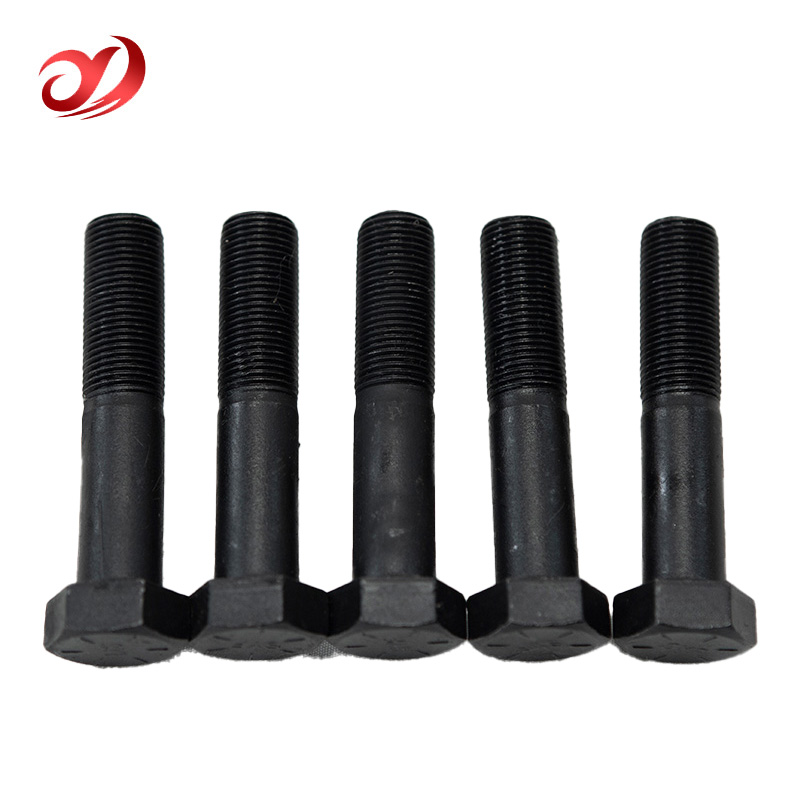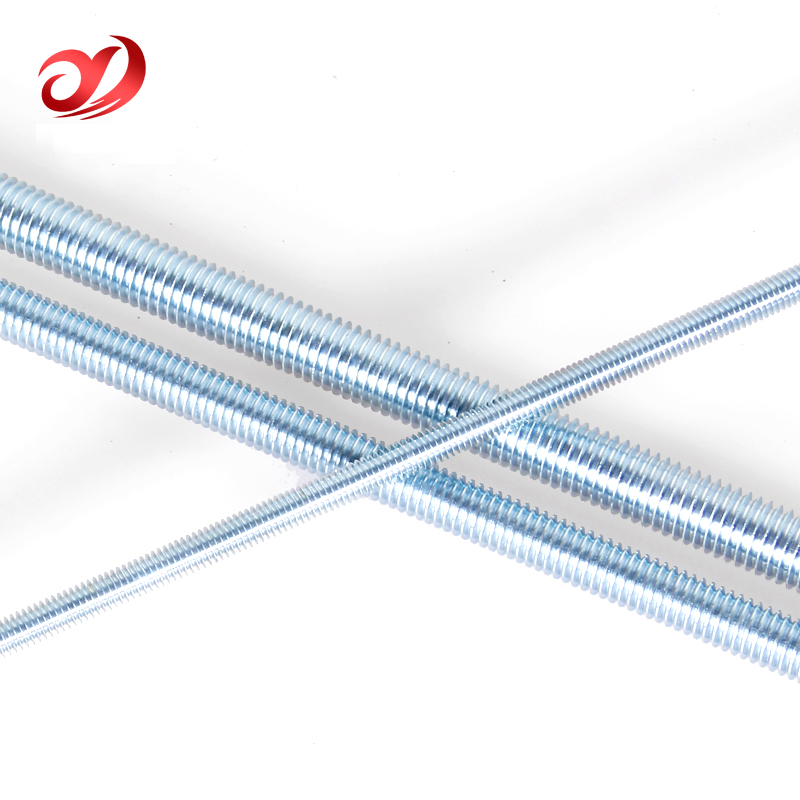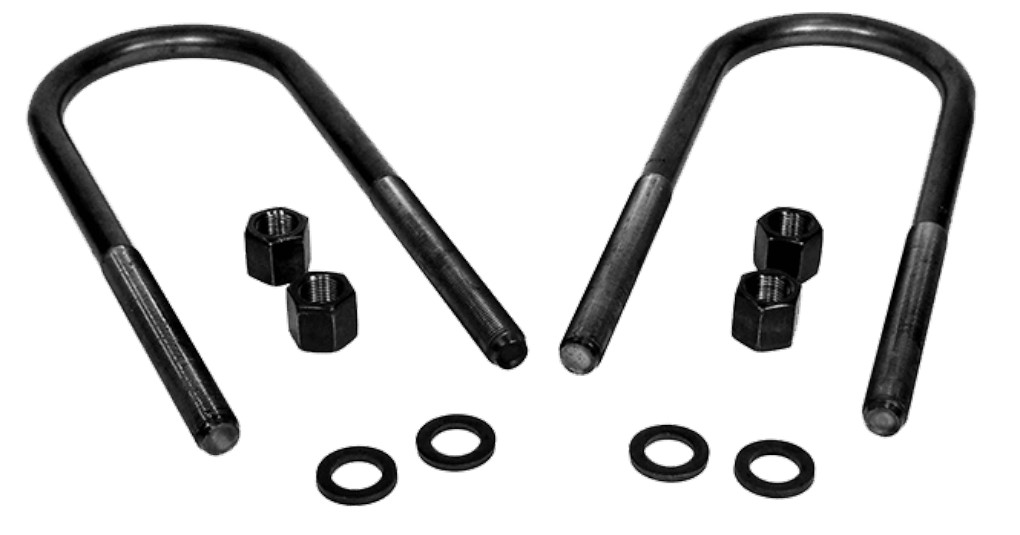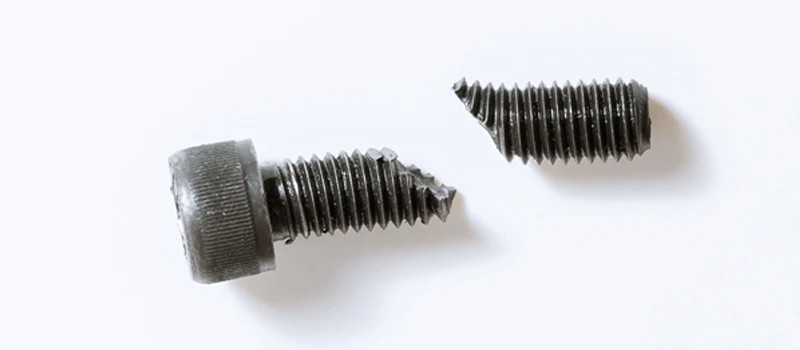In the fields of steel structure construction, bridge building, and heavy equipment manufacturing, selecting high-strength bolts is crucial for the stability and long-term reliability of the structure. A325 and A325M heavy hex bolts are among the industry standard fasteners due to their outstanding mechanical performance, stable quality, and wide range of applications. This article will delve into the technical standards, performance characteristics, and applications of A325 and A325M bolts.
Overview of A325 and A325M Standards
Both A325 and A325M are high-strength structural bolts primarily used for steel structure connections, but the key difference between them lies in the unit system and the markets they are applied to.
A325 Bolt (Imperial): Complies with ASTM A325 standards, using imperial units (such as 1/2", 5/8", 3/4"), and is mainly used in the United States and other countries that use the imperial system.
A325M Bolt (Metric): Complies with ASTM A325M standards, using metric units (such as M16, M20, M24), and is widely used in European, Asian, and other metric system-based markets.
While the chemical composition and mechanical properties are similar, the selection of the appropriate size standard is crucial to ensure compatibility and efficiency in different international projects.
Differences Between A325 and A325M
The primary difference lies in the unit system: A325 uses imperial units, while A325M uses metric units. Therefore, choosing the correct standard is important to ensure applicability and compatibility in different markets.

Materials and Mechanical Properties
Chemical Composition
A325 and A325M bolts are typically made from medium-carbon steel or medium-carbon alloy steel and are heat-treated by quenching and tempering to improve mechanical strength and toughness. Common materials include ASTM 1035, 1045 steels, and, for specific applications, low-alloy steels like ASTM 5140 or 40Cr.
Mechanical Property Requirements
As high-strength bolts, A325 and A325M have tensile strengths much higher than those of regular structural bolts. The following is a comparison of their performance indicators:
| Performance Indicator | A325 (Imperial) | A325M (Metric) |
|---|---|---|
| Yield Strength | ≥ 660 MPa | ≥ 660 MPa |
| Tensile Strength | 830-1030 MPa | 830-1030 MPa |
| Elongation | ≥ 14% | ≥ 14% |
From the data above, it can be seen that both A325 and A325M bolts can withstand very high tensile loads, ensuring the stability and safety of the structure in high-stress environments.
Is the A325 Bolt a Heavy Hex Bolt?
Yes, the A325 bolt is a heavy hex bolt. It typically features a hexagonal head design, making it suitable for high-strength connections in structural applications. Its design and manufacturing meet high standards to ensure reliable connections in construction and industrial structures.
How Much Weight Can an A325 Bolt Hold?
The load-bearing capacity of an A325 bolt depends on its size and the specific conditions of its application (such as pretension and installation method). Generally, an A325 bolt has a tensile strength range of 830-1030 MPa, allowing it to withstand relatively large loads. For example, a standard 1/2" A325 bolt can theoretically bear around 35,000 to 45,000 pounds (approximately 16,000 to 20,000 kilograms) of tension, though the exact load will depend on engineering requirements, accessories, and installation methods.
What Grade Bolt is A325M?
The A325M bolt is classified as a high-strength structural bolt, with the same strength as the A325 bolt, offering a tensile strength range of 830-1030 MPa. In the high-strength bolt grading system, it is classified as Grade 5. Like A325 bolts, A325M bolts are widely used in steel structure projects that require high-strength connections.
Applications
Steel Structure Projects
A325 and A325M heavy hex bolts are widely used in high-rise buildings, bridges, stadiums, and factory structures, primarily to provide high-strength connections that enhance overall structural shear resistance and stability.Transportation and Infrastructure
In the construction of highway bridges, railway bridges, and airport facilities, high-strength bolts provide the advantages of easy installation and removal, making them ideal for prestressed steel structures and critical load-bearing areas.Energy and Industrial Manufacturing
A325/A325M bolts are also extensively used in wind turbine towers, photovoltaic brackets, petrochemical equipment, and heavy machinery manufacturing. In these high-stress, high-vibration environments, high-strength bolts offer reliable connections that ensure long-term operational stability.
Installation and Accessory Requirements
Pretension Requirements
To ensure bolts fully utilize their slip-resistance capabilities, A325/A325M bolts are typically installed using torque control or angle control methods. The common recommended torque ranges are as follows:
| Bolt Size | Recommended Torque (Nm) |
|---|---|
| M16 | 150-200 |
| M20 | 290-380 |
| M24 | 500-650 |
Proper pretension ensures that the bolts remain tightly fastened, enhancing their shear resistance.
Companion Nuts and Washers
According to ASTM standards, A325/A325M bolts are typically used in combination with the following accessories:
Nuts: ASTM A563 (Heavy hex nuts)
Washers: ASTM F436 (High-strength steel washers)
The matching use of bolts, nuts, and washers ensures uniform force distribution and increases connection reliability.
Surface Treatment
A325 and A325M bolts can be selected for various surface treatments based on the application requirements to enhance corrosion resistance:
Black Oxide: Suitable for indoor environments, providing basic rust protection.
Hot-Dip Galvanizing (HDG): Improves corrosion resistance, ideal for outdoor environments such as bridges, ports, and wind turbines.
Dacromet: Exhibits excellent salt spray resistance, commonly used in marine engineering and renewable energy industries.
How to Choose the Right A325/A325M Bolt?
Based on Engineering Standards: Ensure the selected bolt complies with ASTM A325/A325M specifications and meets the building code requirements of the project’s location.
Size and Load Matching: Select the appropriate diameter, length, and strength grade based on specific structural calculations to ensure safety.
Surface Protection: Choose the appropriate corrosion protection treatment based on environmental conditions to extend the bolt's service life.
Certification and Testing: Choose products that are certified to ISO, ASTM, and other relevant international standards and come with a complete material test certificate (MTC).
Conclusion
A325 and A325M heavy hex bolts are crucial fasteners in steel structure engineering due to their high strength, excellent shear resistance, and broad applicability. In steel structure bridges, energy facilities, and heavy machinery manufacturing, the correct selection and installation of high-quality A325/A325M bolts can significantly enhance the reliability and durability of the project.
For projects that require high-strength bolts, it is recommended to choose products certified by ASTM and paired with compliant nuts and washers to ensure the best connection performance. If you have further needs or technical questions, feel free to consult with us.









